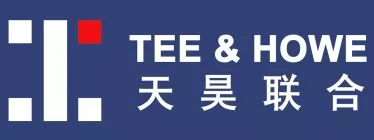In addition to difficulties in producing evidence acceptable to authorities, including a Chinese court, and low damages awards it is not unheard of that the infringers in China simply run away, then open a new company to continue with the infringement. This problem has long been criticized by overseas observers. Toby Mak (Overseas Member) explains how China is now tackling this issue.
In December 2018, 38 Chinese departments including the Chinese National Development and Reform Commission (NDRC), the People's Bank of China, and Chinese National Intellectual Property Administration (CNIPA, formerly known as SIPO) jointly signed a memorandum of cooperation to conduct joint "disciplinary" actions against serious dishonest subjects in the field of intellectual property (patent). This article highlights the measures to be adopted by this memorandum. Patent attorneys take note: the proposed action targets patent attorneys as well. As Toby notes the somewhat bizarre selection of punishments reflects the fact that these are determined by Government administrative bodies1.
Subjects of action
The memorandum stipulates that for companies, the punishment may extend to the company legal representative, the responsible persons, and the actual controlling person of the company. Naturally, for a natural person infringer, the punishment is directed to the individual.
Punishable actions
The memorandum specifies the following punishable actions:
- Repeated infringement of a patent by the same infringer.
- Non-compliance with the law, including refusing to implement administrative decisions on false marking (such as removing the false marking), or impeding local IP administration's investigation.
- Patent agency activities with serious legal violations, specifically being put into the "abnormal operating list" for more than three years. [Such as filing abnormal patent applications. See below.]
- Patent attorneys acting in bad faith, including pretending to work in a Chinese patent agency, and faking, transferring, selling, leasing, and lending qualification/practicing certificates. [These may be unimaginable to fellow readers, but these are real in China. In fact, I have been approached to put my practicing certificate on lease...]2
- Abnormal patent application behaviors as defined in "Certain stipulations regarding regulating patent application behaviors" issued by the CNIPA (SIPO back then) in February 2017.
- Comments: Patent application behaviours considered to be abnormal in these stipulations are multiple patent applications filed by the same entity as below:
-
- with apparently the same contents;
- apparently copying existing art;
- with simple replacement or combination with different materials, compositions, proportions, components, and so on;
- with apparently fabricated experimental data or technical effect; and
- with randomly computer-generated product shape, pattern or color.
- It is not clear of what number that would constitute "multiple", for example two or above? There could be much room for argument in relation to points one, three, four and five.
- For the first point, it is usual practice that applications were filed with the same description but only the claims are different, in particular divisional applications. Therefore, my view is that "same contents" means exactly the same specification including description and claims.
- For point three, it cannot be ruled out that replacement or combination with different materials, compositions, proportions, components, and so on could result in a new invention.
- For point four, I am not sure how the CNIPA by itself could determine that the experimental data or technical effect is fabricated, notwithstanding that it is unimaginable for the CNIPA to carry out any experiments. If later relevant publications are to be relied on, whether the results in these later publications could be trusted is another issue. This may only work literally, i.e. apparently fabricated experimental data or technical effect.
- For point five, I have absolutely no idea how the CNIPA could determine that a product's shape, pattern or color has been randomly generated by a computer. Any thoughts would be appreciated.
- Providing false documents.
Punishments
The punishments are as below:
- At the CNIPA:
-
- canceling patent fees reduction;
- removing from priority examination; and
- removing from "Quick Right Assertion Pathway".
- Canceling various official titles including enterprise of advantage, pilot patent business enterprise, example enterprise, and so on, with a two-year restriction on reapplying.
- Restricting or reducing government funding support, and with stricter reviews on application.
- Restricting subsidies and social security funding support.
- Restricting participation in government tenders.
- Recording bad faith behavior in financial credit systems.
- Prohibiting from issuing corporate bonds.
- Strengthening the management of issuing financing instrument for non-financial debt, corporate credit bonds, and stock, including using the recorded bad faith behavior as reference.
- Restricting the establishment of financial institutions.
- Prohibiting from becoming the legal representative, actual controllers, directors, supervisors and senior management personnel of financial institutions and enterprises.
- Restricting the shareholding ratio of bank card clearing institutions and non-bank payment institutions to not more than 5%.
- Increasing property insurance premiums or limiting the provision of insurance services.
- Suspending or terminating the equity incentive plan of the domestic state-controlled listed company.
- Acting as reference [apparently in an adverse manner] for the approval of the following:
-
- Financing at financial institutions.
- Approval and management of foreign exchange.
- Acquisitions.
- The review of major assets restructuring of unlisted public companies.
- Eligibility to sell funds.
- Obtaining social welfare including subsistence allowances, medical assistance, temporary assistance, and affordable housing within a certain period.
- Restricting obtaining certification, and/or becoming a certifying body.
- Increasing rate of product inspection by various authorities.
- Restricting from making and selling goods for a certain period.
- Restricting becoming a customs-certified enterprise (with ease to import and/or export goods).
- Imposing stricter customs controls on importing and/or exporting goods.
- Restricting access to government land resources.
- Restricting application for research projects.
- Prohibiting advertisement of products found to be infringing.
- Stricter review on telecommunication work permits.
- Restrictions on working as a civil servant or being employed by public institutions.
- Restricting high consumption activities including taking planes, first class seats on trains, and other consumption behaviors that are not necessary for life and work, for example taking holidays or traveling abroad.
- Restricting purchase of real estate or state-owned properties.
- Restricting to obtain public recognitions and/or awards, and revoking already those already obtained.
- Making the public aware of bad faith behavior, including publishing details online.
Observations
It should be noted that the memorandum is not only directed to infringement of patents, but also other bad faith actions, such as false marking.
The memorandum is directed to administrative decisions made by an intellectual property administration, that is, the local intellectual property offices. Although this does not seem to be very useful as most concerns are on patent infringement mainly handled by the courts. It is not well known to many foreigners that in fact similar measures have already been applied to any party refusing to enforce a court's decision, including decisions relating to patent infringement cases. The Chinese court has a website that lists the so-called "dishonest entity subject to enforcement" – http://zxgk.court.gov.cn. As of 6 February 2019, the statistics are:
- 13.08 million entities are on this list;
- 18.53 million people are barred from air travel; and
- 5.56 million people are prohibited from traveling on trains.
It should be apparent that the punishments for being listed as an IP bad faith entity are severe. In my view, it is equivalent to being declared bankrupt in a Western country. These measures would be very intimidating to IP infringers in China. After all, no company executive will relish the idea of being restricted to traveling second class on trains due to IP infringement. Business costs could also be significantly increased with, for example, higher insurance premiums, and the loss of government businesses could have a serious impact on many businesses. The introduction of these will be on the table for any US-China trade negotiations.
Footnotes
1. Editor: The list also highlights how extensive the long hand of Government can be in China.
2. Editor: Not altogether unheard of. The UK has recently shut down a web site selling "replacement" (AKA fake) examination certificates.
Originally published by CIPA Journal, July/August 2019.
The content of this article is intended to provide a general guide to the subject matter. Specialist advice should be sought about your specific circumstances.

